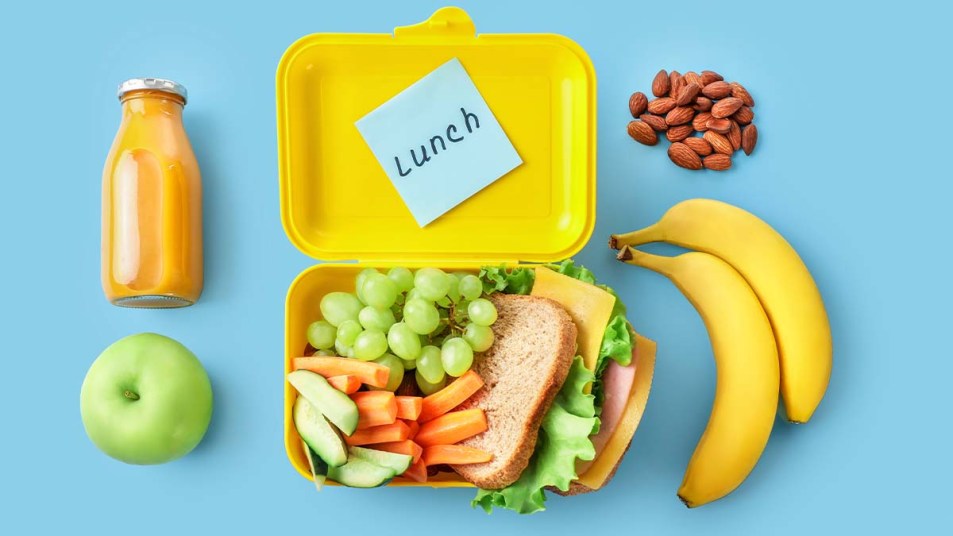Cooking for Picky Eaters? Experts Say You Can Expand Their Palates By Making Simple Changes
Getting your kid to eat healthy is easier than you think.

The school year is in full swing. For kids, that means early mornings and new learnings. For parents and caretakers, it means ensuring your kids get the nutrition their minds and bodies need at school and at home. Left to their own devices, most kids choose sugary drinks and snacks over healthier fruits and vegetables. Unfortunately, these processed foods have little to no nutritional value, and they prevent kids from getting the vitamins and minerals necessary to stay alert and receptive to learning. There are things you can do, though, to encourage your kids to make smart food choices. We spoke to four school nutrition professionals to learn more about children’s nutritional needs, how school meals are changing, and what you can do to expand your child’s palate.
Key Nutritional Needs for Growing Kids
Jeanne Reilly, a school nutrition director in Windham-Raymond, ME, says nutrients like fiber, calcium, and vitamins A, B, C, and D promote physical and mental development in school-aged kids. She says that children typically get B vitamins that help form red blood cells from foods like whole grain bread. They miss out, however, on several vital nutrients throughout the school day. “We see what children are bringing in their lunch boxes,” she notes. “It’s pretty rare that they even have a vegetable or a piece of fruit at all.”
A 2014 Tufts University study found that packed lunches and snacks were more likely to consist of sandwiches and packaged foods than fruit. “Given that over 40 percent of US schoolchildren bring their lunches to school on a given day, it’s important to consider how nutrition experts and policymakers could help parents meet the challenges of cost, convenience, and child preference and add nutrition to the equation,” lead author Jeanne Goldberg, PhD, RD, said in a news release.
Amanda Warren, school nutrition director for Staunton City Schools in Virginia, says that plenty of students do not even eat breakfast. “Mornings are super busy for families and children are waking up for really early school days and they’re just not ready to eat,” she explains. “So, when the school morning [gets going], that missed nutrition creates energy depletion and focus is lost, and then they start feeling poorly. Belly grumbles and headaches become an issue.” A lack of nourishment throughout the day can also make it harder for children to focus in class and participate in physical activities.
The Importance of School Meals
Today, the School Breakfast Program and National School Lunch Program offers low-cost or free school meals to millions of students. Reilly points out that USDA standards require school meals include a wide variety of fruits and vegetables. “We offer a cup of fruit at breakfast, and depending on the grade level, over a cup (1 ¼ cups to two cups) of fruits and vegetables at lunch time,” she says.
Registered dietitian and founder of School Meals That Rock, Dayle Hayes, MS, RD, describes how current school meals differ from those of the past. “There are plenty of schools now where children have the opportunity to eat dragon fruit, which many of them would never be exposed to at home,” she explains. “But the other advantage of introducing these new and different foods at school is that children are around other children, and it turns out that peer pressure really does work in terms of trying new foods.”
Reilly shares how her school’s program allows students to grow vegetables that they later use to make meals. Carrots for curried carrot soup is a favorite. “They process the carrots, they chop the onions, they blend the soup with an immersion blender, and the most wonderful thing is that currently 80 to 85 percent of the children love this soup,” she says. “If we had put curried carrot soup on the menu without making it in advance, they probably wouldn’t have even tried it.”
How To Establish Healthy Eating Habits At Home
Getting your child to try a new fruit or vegetable at home doesn’t have to be difficult. Jessica Shelly, director of student dining services for Cincinnati Public Schools, encourages caretakers to incorporate various seasonings into home-cooked meals. “One of the things I love is that we have spice stations at all of our schools,” she says. “So, kids are able to create their own palate profile based on what they like…If you offer them an Italian herb topping, a shakeable Ranch topping, or crushed red pepper flakes, they’re more apt to try something.”
Another way to establish healthy eating habits is by getting children involved in the kitchen. This might seem like a challenge on a busy weeknight. However, kids who help cook the food are more apt to eat the food, which means no more unique meals, special preparation, or negotiations at the dinner table. (In other words: time saved!) “I think as your child becomes more engaged by the [cooking] process, and as it becomes more normal, and they become more skilled, it can actually be a help during meal times to have them be little helpers in the kitchen,” Reilly concludes.
These are just a couple of ways to get your kids excited about eating healthy foods. With patience and through the educational process, your child or grandchild can become more open to nourishing their body with the right nutrients — both in the classroom and at home.
















